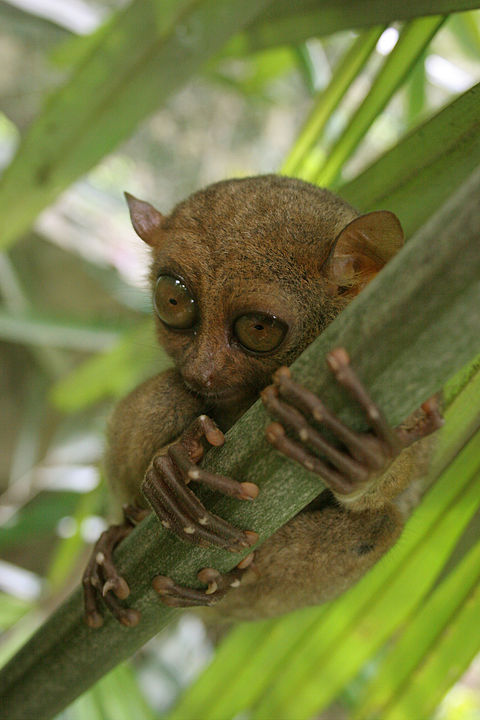Tarsiers are primates of the genus Tarsius, in the family Tarsiidae, which is itself the lone extant family within the infraorder Tarsiiformes. Although the group was once more widespread, all the species living today are found in the islands of Southeast Asia.

Tarsier evolutionary history
Fossils of tarsiers and tarsiiform primates are found in Asia, Europe, and North America, and there are disputed fossils from Africa, but extant tarsiers are restricted to several Southeast Asian islands including the Philippines, Sulawesi, Borneo, and Sumatra. They also have the longest continuous fossil record of any primate genus, and the fossil record indicates that their dentition has not changed much, except in size, in the past 45 million years.
At a lower level, it has been indicated that the tarsiers, currently all placed in the genus Tarsius, actually should be placed in two (a Sulawesi and a Philippine-Western group) or three separate genera (a Sulawesi, Philippine and Western group).
Anatomy and physiology
Tarsiers are small animals with enormous eyes; each eyeball is approximately 16 mm in diameter and is as large as their entire brain
. Tarsiers also have very long hind limbs. In fact, their feet have extremely elongated tarsus bones, from which the animals get their name. The head and body range from 10 to 15 cm in length, but the hind limbs are about twice this long (including the feet), and they also have a slender tail from 20 to 25 cm long. Their fingers are also elongated, with the third finger being about the same length as the upper arm. Most of the digits have nails, but the second and third toes of the hind feet bear claws instead, which are used for grooming. Tarsiers have very soft, velvety fur, which is generally buff, beige, or ochre in color
always cheap viagra online – a comprehensive sexual, medical and psycho-social.
.

All tarsier species are nocturnal in their habits, but like many nocturnal organisms some individuals may show more or less activity during the daytime. Unlike many nocturnal animals, however, tarsiers lack a light-reflecting area (tapetum lucidum) of the eye. They also have a fovea (responsible for sharp central vision), which is atypical for nocturnal animals.
The tarsier’s brain is different from other primates in terms of the arrangement of the connections between the two eyes and the lateral geniculate nucleus, which is the main region of the thalamus that receives visual information. The sequence of cellular layers receiving information from the ipsilateral (same side of the head) and contralateral (opposite side of the head) eyes in the lateral geniculate nucleus distinguishes tarsiers from lemurs, lorises, and monkeys, which are all similar in this respect. Some neuroscientists suggested that “this apparent difference distinguishes tarsiers from all other primates, reinforcing the view that they arose in an early, independent line of primate evolution.”
Tarsier behavior
Tarsiers are the only entirely carnivorous primate on Earth: they are primarily insectivorous, and catch insects by jumping at them. They are also known to prey on small vertebrates, such as birds, snakes, lizards, and bats.

Gestation takes about six months, and tarsiers give birth to single offspring. Young tarsiers are born furred, and with open eyes, and are able to climb within a day of birth. They reach sexual maturity by the end of their second year. Sociality and mating system varies, with tarsiers from Sulawesi living in small family groups, while Philippine and Western tarsiers are reported to sleep and forage alone.
Conservation
Tarsiers have never formed successful breeding colonies in captivity, and when caged, tarsiers have been known to injure and even kill themselves because of the stress.
One site having some success at restoring tarsier populations is in the Philippine Island of Bohol. The Philippine Tarsier Foundation has developed a large semi-wild enclosure that uses lights to attract the nocturnal insects that make up the tarsier’s diet.
The 2008 described Siau Island Tarsier is regarded as critically endangered and was listed among the 25 most threatened primates by Conservation International and the IUCN/SCC Primate Specialist Group in 2008. Malaysian government protects tarsiers by listing them in the Totally Protected Animals of Sarawak, the Malaysian state in Borneo where they are commonly found.










This Post Has One Comment
Pingback: Western tarsiers | Haloswat